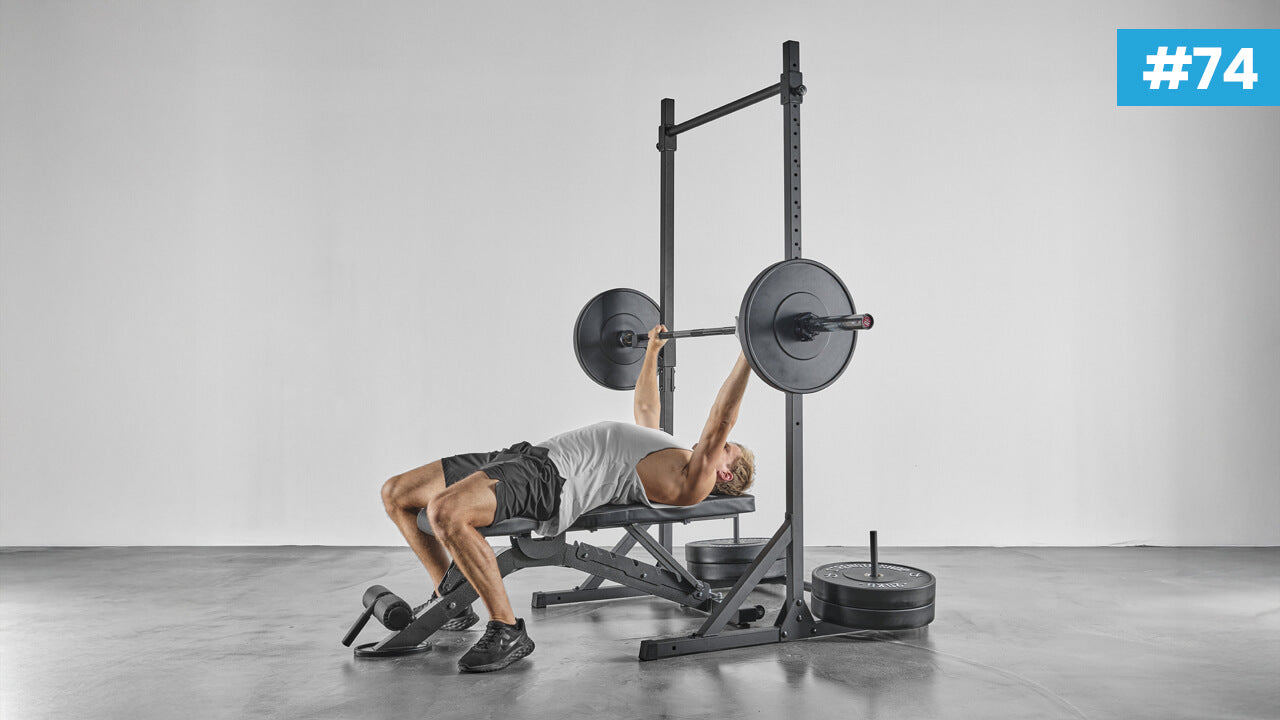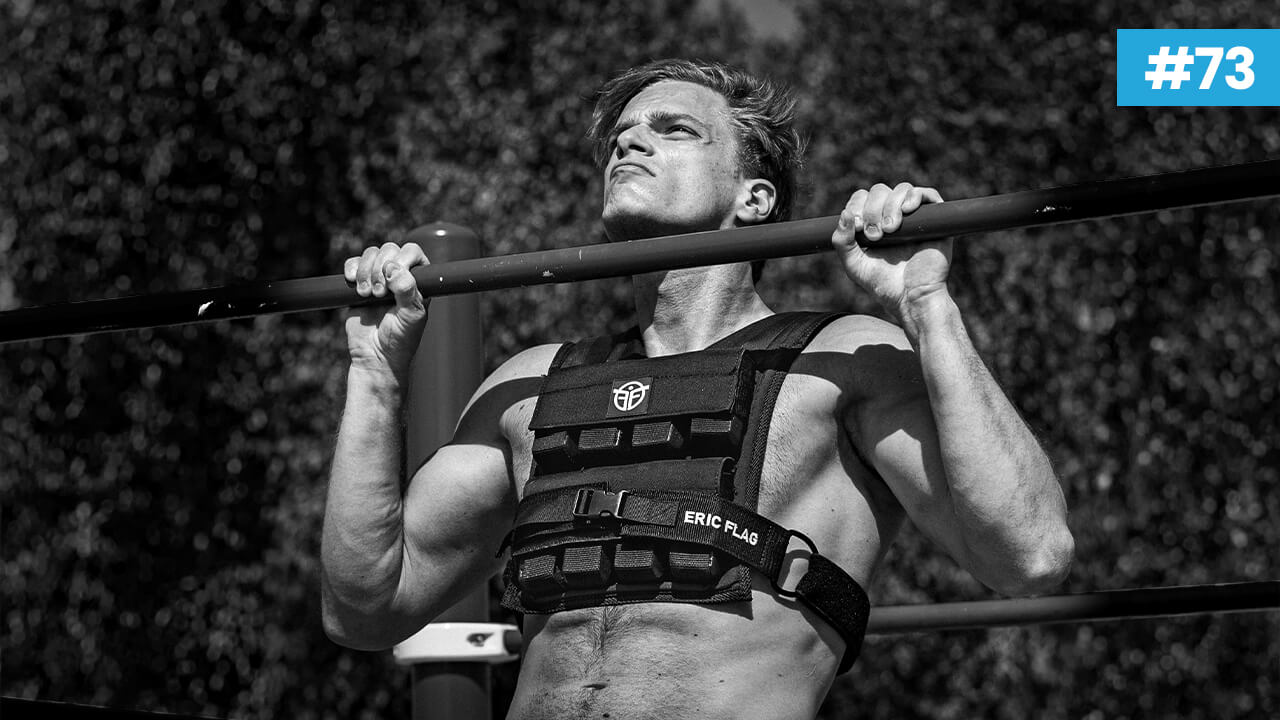The Ultimate Hip Thrust Guide: Techniques, Benefits and Tips!
Do you dream of firm, bouncy, sculpted glutes ? Are you looking for an exercise that effectively targets these muscles, while offering the opportunity to progress in both load and intensity?
Hip thrust is the answer you've been waiting for 💪
This muscle-building exercise involves lifting a load upwards using the hips, while leaning against a bench or other support.
In this article, we'll show you why hip thrust deserves its reputation as the ultimate buttock-sculpting exercise. We'll also guide you through the steps involved in mastering its technique, how to enrich and intensify your practice, and which exercises to combine to perfect your workout.
Let's go it's on! 🔥
Why is the Hip Thrust the king of gluteal exercises?

The hip thrust is an essential exercise for gluteal development. It's particularly effective because it places a heavy load on these muscles, encouraging them to grow.
It also helps improve hip extension, essential for many sporting and everyday activities. What's more, it reduces the risk of back, knee and ankle injuries by improving pelvic stability and correcting muscular imbalances.
It calls on numerous muscle groups: gluteal muscles, hamstrings, quadriceps, adductors as well as abdominals. Simply excellent exercise 💪
The unique benefits of Hip Thrust
Unlike other exercises, such as the squat or deadlift, the hip thrust is performed in a horizontal position. This allows constant tension to be maintained on the glutes throughout the movement, with no release phase. This generates greater mechanical stress and better recruitment of muscle fibers.
To get the most out of the hip thrust, it's crucial to follow a precise technique. Incorrect execution can cause pain, injury or render the exercise ineffective.
How to perform the Hip Thrust correctly
To perform the hip thrust correctly and maximize results, follow these steps:
- Start seated on the floor, shoulder blades braced against a bench or other stable surface, feet flat and hip-width apart.
- Stretch out your arms to get a reference point for your feet.

- Position a bar or elastic band on your hips (with a protective cushion if necessary) and hold it firmly.

- Lift the hips towards the ceiling, contracting the glutes and keeping the back straight, forming a straight line from the shoulders to the knees.

- Lower yourself back down, controlling the movement without your buttocks touching the floor, and repeat the exercise.

Hip Thrust variations and progression
The hip thrust is a versatile exercise offering many variations to suit different levels, objectives and equipment availability. It's also crucial to know the tricks to progress effectively and maximize results.
Here are 3 variations of the hip thrust, from the simplest to the most complex, as well as recommendations for structuring your progression and defining the ideal frequency of your workouts.
1 - Hip Thrust on the floor for beginners


The floor variant represents the initial approach to hip thrust. With no need for a bench or bar, this version can be performed with bodyweight or a light weight.
This basic movement is perfect for learning technique and gently strengthening the glutes, ideal for novices or as a warm-up before moving on to more demanding exercises.
2 - Variation with elastic for a moderate challenge
The introduction of a elastic band during hip thrust provides additional resistance. This addition strengthens muscle engagement and amplifies the sensation of effort, thus enriching the exercise.
3 - Hip Thrust with bar for maximum intensity

Thehip thrust with bar is the ultimate variant for those seeking to maximize their training. Performed with a weighted bar across the pelvis and shoulder blades against a bench, it intensely trains the glutes with a significant load, a fundamental aspect in stimulating their development and power.
This version is recommended for people who want to intensify this exercise! 🔥
Common mistakes to avoid ❌
Here are some common hip thrust mistakes:
- Arching your back or digging in your stomach can cause lumbar tension and reduce gluteal activation. Keep your back neutral, your stomach tucked in and your gaze fixed ahead of you to avoid these problems.
- Excessive lifting of hips or shoulders may cause pelvic rotation or lumbar hyperextension. Stop the movement when the hips are in line with the knees and shoulders, without lifting the shoulders off the bench.
- Failure to contract the glutes at the top of the movement can limit the effectiveness of the workout. Make sure you squeeze your glutes with every repetition.
- Descending too quickly or touching the ground can reduce the tension on your glutes. Control your descent and keep a small distance between the ground and your buttocks.
Use of equipment: bar, bench and weights
The choice of equipment for hip thrust varies according to level and objectives. Here are some tips for proper use:
- The barbell: ideal for gradually increasing the load and improving strength. Select a suitable barbell and place it in the groin area, protecting it with a cushion or towel.
- The bench: must be stable, solid and set at the right height, at shoulder blade level. Make sure it doesn't slip during exercise.
- Weights: choose a weight suited to your level and gradually increase it, taking care to maintain correct technique.
Progression planning and training frequency
To progress in your hip thrust practice, gradually increase the difficulty of the exercise according to your level and how you feel.
You can modify the weight, the volume of repetitions/sets or the speed of execution. Training frequency should be adjusted according to your goals and recovery capacity.
Hip thrust should be practised at least once a week, and potentially up to 3 times for advanced users. However, rest is important, as overtraining increases the risk of injury.
Complementary exercises for a balanced program
Thehip thrust is an excellent exercise for working the glutes, but it's not the only solution for achieving a shapely, harmonious gluteus maximus. It's crucial to combine it with other exercises targeting the glutes from different angles, using different loads and speeds.
Here are some examples of complementary exercises:
- Squat
- Deadlift
- Bulgarian squat
- Box step-up
Suggested weekly routines
The planning of your weekly routines should take into account your level, your goals, your ability to recover and your available time. Here are some suggestions:
-
For novices: practice hip thrust once a week, with a light or medium weight for 3 to 4 sets of 10 to 15 repetitions. Complete with 2 to 3 complementary exercises and allow at least 48 hours' rest between each gluteal workout.
-
For intermediates: incorporate hip thrust twice a week, with a medium or heavy weight. Add 3 to 4 complementary exercises, alternating strength and volume sessions, and leave at least 24 hours of rest between sessions.
- For advanced users: perform hip thrust three times a week, with a heavy or very heavy weight for 4 to 5 sets of 6 to 10 repetitions. Complete with 3 to 4 exercises diversified in terms of angles, loads, speeds, leaving at least 24 hours of rest between sessions.
Conclusion
The hip thrust is an essential exercise if you want to strengthen your glutes, improve your posture and boost your performance. And because it's so easy to do, it's accessible to everyone!
To maximize the benefits of hip thrust, precise technique is essential. It's also advisable to vary exercises and loads to stimulate the muscles as much as possible. We've provided you with all the advice and information you need to practice hip thrust safely and effectively.
If you need equipment to perform this exercise, we recommend the weight bench available in our store. You can also use elastic bands or a kettlebell to make the exercise more complex.
So don't hesitate any longer! Start practicing hip thrust today and see a noticeable improvement in your glutes in no time 🔥
See you soon.
Eric Flag






Leave a comment
This site is protected by hCaptcha, and hCaptcha's Privacy Policy and Terms of Service apply.